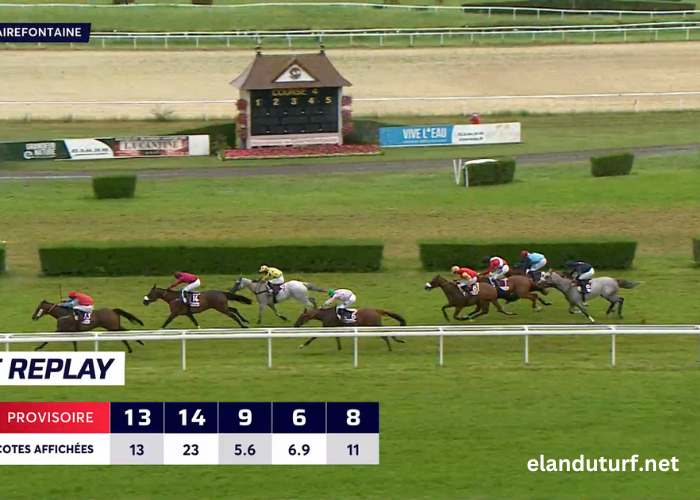The Coupe Du Monde, commonly known as the FIFA World Cup, is the pinnacle of international football. Held every four years, this prestigious tournament brings together the best national teams from around the globe to compete for the ultimate prize in soccer. The World Cup is more than just a sporting event; it is a global spectacle that captivates the attention of billions of people. Its history, cultural significance, and impact on the sport make it one of the most anticipated events in the world.
Historical Evolution of the Coupe Du Monde
The idea of a world championship for football was first conceived in the early 20th century. However, it was not until 1930 that the first Coupe Du Monde was held in Uruguay. The inaugural tournament featured 13 teams, and the host nation emerged victorious. Over the decades, the tournament has grown in size, prestige, and global reach. From the early years, when the competition was dominated by a few teams from Europe and South America, the World Cup has evolved into a truly global event, with teams from every continent now participating.
The Coupe Du Monde has seen many memorable moments that have shaped the history of football. Legendary players like Pelé, Diego Maradona, and Zinedine Zidane have graced the tournament, leaving an indelible mark on the sport. The World Cup has also been a platform for emerging football nations to announce their arrival on the global stage. For example, the victories of Brazil, Germany, and Italy have cemented their status as football powerhouses, while teams like Croatia and Ghana have captured the world’s imagination with their remarkable performances.
The Structure of the Tournament
The Coupe Du Monde is a month-long event that takes place in a selected host country. The tournament features 32 teams, which qualify through a series of regional tournaments held over the preceding three years. The qualification process is rigorous, ensuring that only the best teams from each region make it to the finals.
The tournament itself is divided into two main phases: the group stage and the knockout stage. In the group stage, the 32 teams are divided into eight groups of four. Each team plays the other teams in its group once, with the top two teams from each group advancing to the knockout stage. The knockout stage is a single-elimination format, where teams compete in successive rounds until two teams remain to contest the final.
The final match of the Coupe Du Monde is one of the most watched sporting events in the world, often attracting an audience of over a billion people. The winning team is awarded the FIFA World Cup Trophy, a symbol of footballing excellence and national pride.
Cultural and Social Impact of the Coupe Du Monde
The Coupe Du Monde is more than just a football tournament; it is a cultural phenomenon that unites people from diverse backgrounds in a shared passion for the sport. During the World Cup, cities around the world come alive with celebrations, as fans gather in homes, bars, and public squares to watch the matches. The tournament transcends national boundaries, fostering a sense of global community and camaraderie.
The World Cup has also had a significant impact on the countries that host the tournament. Hosting the Coupe Du Monde is seen as an opportunity to showcase a nation’s culture, infrastructure, and hospitality to the world. The tournament often leads to a surge in tourism, with fans from all over the globe traveling to the host country to experience the event live. In addition, the investment in infrastructure required to host the World Cup can have long-term benefits for the host nation, including improved transportation systems, stadiums, and other public facilities.
However, the Coupe Du Monde is not without its controversies. The tournament has faced criticism over issues such as the selection of host countries, the treatment of workers involved in the construction of World Cup facilities, and the environmental impact of hosting such a large event. Despite these challenges, the World Cup remains a powerful force in promoting international understanding and bringing people together.
The Economic Influence of the Coupe Du Monde
The Coupe Du Monde is also a major economic event, generating billions of dollars in revenue for FIFA, sponsors, broadcasters, and host countries. The tournament’s economic impact is felt in multiple ways, from the sale of tickets and merchandise to the boost in tourism and advertising revenue.
For the host country, the Coupe Du Monde can be a significant economic boost. The influx of tourists, coupled with the global media coverage, provides an opportunity to showcase the country’s attractions and generate long-term interest in tourism. Additionally, the construction of new stadiums and infrastructure projects can create jobs and stimulate the local economy.
However, the economic benefits of hosting the World Cup are not guaranteed. The costs of hosting the tournament can be substantial, and the long-term economic impact varies depending on how well the infrastructure and investments are utilized after the tournament ends. For some countries, the financial burden of hosting the World Cup has led to public debate about whether the benefits outweigh the costs.
The Role of Media and Technology in the Coupe Du Monde
The media plays a crucial role in the global reach and popularity of the Coupe Du Monde. The World Cup is one of the most widely broadcast events in the world, with matches available on television, radio, and online platforms. The extensive media coverage allows fans from every corner of the globe to follow their favorite teams and players, even if they cannot attend the matches in person.
In recent years, advancements in technology have transformed the way fans experience the Coupe Du Monde. Social media platforms have become a key part of the World Cup experience, allowing fans to engage with the tournament in real-time, share their reactions, and connect with other fans around the world. The rise of streaming services has also made it easier for fans to watch matches on their devices, ensuring that they can follow the tournament no matter where they are.
Moreover, technology has also had an impact on the tournament itself. Innovations such as goal-line technology and the Video Assistant Referee (VAR) system have been introduced to ensure fairness and accuracy in officiating. These technological advancements have been widely debated but are now an integral part of the World Cup experience.
Memorable Moments and Legends of the Coupe Du Monde
The Coupe Du Monde has given football fans countless unforgettable moments and has seen the emergence of legendary players who have become icons of the sport. From stunning goals to dramatic matches, the World Cup has provided a stage for some of the greatest performances in football history.
One of the most iconic moments in World Cup history is Diego Maradona’s “Hand of God” goal during the 1986 tournament. This controversial goal, followed by his brilliant solo effort in the same match against England, helped Argentina secure their place in the semifinals and eventually win the tournament. Maradona’s performance in 1986 is still regarded as one of the greatest individual displays in World Cup history.
Another memorable moment came in 1998 when France, the host nation, won their first World Cup. Led by Zinedine Zidane, who scored twice in the final, France defeated Brazil 3-0 to claim the title. This victory sparked widespread celebrations across France and solidified Zidane’s place as one of the all-time greats.
More recently, the 2014 World Cup in Brazil saw Germany’s 7-1 demolition of the host nation in the semifinals, a match that shocked the football world. Germany went on to win the tournament, with Mario Götze scoring the winning goal in the final against Argentina.
These moments, and many others, have become part of the rich tapestry of World Cup history, celebrated by football fans around the world.
The Global Impact of the Coupe Du Monde
The Coupe Du Monde has a profound impact on the global stage, influencing not just the world of football, but also culture, politics, and society. The tournament brings together people from different cultures, languages, and backgrounds, united by their love for the sport. This cultural exchange fosters a sense of global unity and understanding that extends beyond the tournament itself.
The World Cup also serves as a platform for social and political messages. For example, the 1978 World Cup in Argentina was held during a period of political turmoil, and the tournament was used by the ruling military junta to promote a positive image of the country. Similarly, the 2010 World Cup in South Africa was seen as a symbol of the country’s progress since the end of apartheid, showcasing its transformation on the global stage.
In recent years, players and teams have used the World Cup to highlight important social issues, such as racism, inequality, and human rights. These actions have sparked important conversations and demonstrated the power of football as a force for positive change.
Conclusion: The Enduring Legacy of the Coupe Du Monde
The Coupe Du Monde is more than just a football tournament; it is a celebration of the beautiful game that captures the imagination of people around the world. Its rich history, cultural significance, and global impact make it one of the most important sporting events in the world.
As the World Cup continues to evolve, it will undoubtedly continue to inspire new generations of football fans and players. Whether through unforgettable moments on the pitch, the cultural exchange among fans, or the social and political messages it conveys, the Coupe Du Monde will remain a symbol of the universal appeal and power of football.




